It’s been one of those days. Since the moment you hit the snooze button this morning you’ve been behind schedule. Now it’s well past your normal workout time and you haven’t even changed into your gym clothes. There’s no way you can squeeze a beneficial strength workout into the 20 minutes still available to you. Or can you?
“It is possible to get a great strength workout in under half an hour,” says Tony Gentilcore, CSCS, who guides clients through such workouts at Cressey Performance Training Center in Hudson, Mass. The key to eking out fitness gains in less time than it takes to watch a Seinfeld rerun, says Gentilcore, is smart exercise selection.
Start by replacing “isolation movements” that activate individual muscle groups (think hamstrings curls on the machine) with workouts featuring multijoint movements — such as squat variations — that cover major muscle groups with fewer exercises. Also, emphasize exercises that involve extension or retraction (such as row variations) rather than those that involve sitting, curling and flexing, says Gentilcore. And, build in variety and progression — to make consistent progress, you need to change it up and keep challenging yourself.
The following 20-minute strength circuit combines five exercises that activate more than half the major muscle groups, says Gentilcore, so you still get a whole-body strength workout with just a handful of movements. Another bonus? Each requires minimal set-up time and little or no equipment (at most a pair of dumbbells), so you can move quickly from one to the next.
The Warm-Up
No matter how hurried you are, be sure to take a few minutes to warm up properly. A good warm-up will prepare your body to perform the following strength exercises more efficiently and with less chance of injury. Gentilcore recommends these three moves:
Lunge Matrix

- Beginning in a normal standing position, feet shoulder-width apart, take a big step forward with your right foot and sink down into a deep lunge, then return to the start position, being sure to push off your heel to engage your glutes and generate more power.
- Next, lunge 45 degrees to the right, 90 degrees to the right, 45 degrees to the rear, and then directly backward with the same leg, returning to the start position between each lunge.
- Keep your chest high and your core tight to maintain core stability.
- One circuit with each leg is sufficient.
Knee to Chest
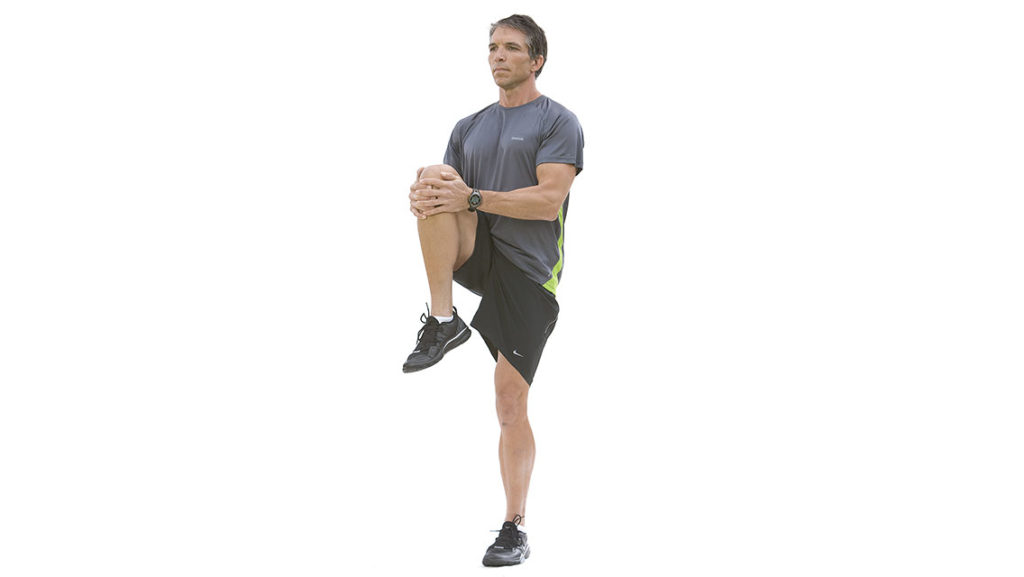
- From a standing position, lift and bend your right leg, grab your knee with both hands and hug it to your chest for two seconds.
- Return to the starting position and then hug your left knee. Be careful not to flex your trunk — that is, bring your knee to your chest, not your chest to your knee. Avoid hyperextending your lower back, as well.
- Repeat with both legs, six to eight times per leg.
Glute Activation
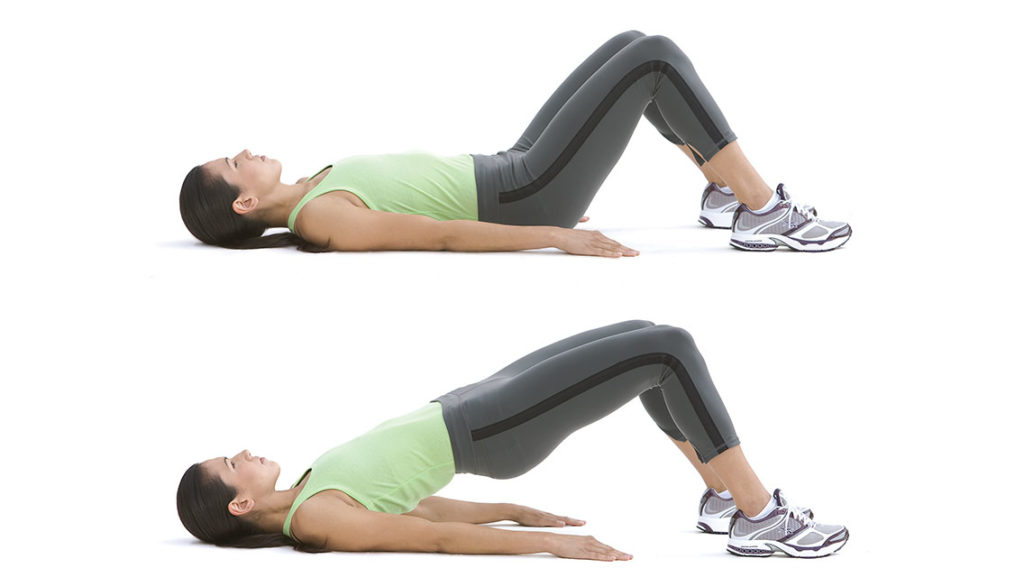
- Lie face-up with your knees bent 90 degrees and your feet flat on the floor, hip-width apart.
- Push your heels into the floor and raise your hips so your body forms a straight line from neck to knees.
- Squeeze your glutes and hold for two to three seconds. Be careful not to hyperextend your back. And relax your hamstrings — let your glutes do all the work.
- Repeat eight to 10 times.
The Workout
After completing your warm-up, do the following five exercises in circuit fashion — that is, complete each exercise one after the other without resting between them. Rest for one minute after you complete each full circuit, or, even better, perform a minute of the mobility exercises you did in your warm-up — you’ll get an extra benefit from the workout without making it any longer. Complete two to four total circuits.
1. Goblet Squat
A great strengthener for the thighs, glutes, lower back and abs.
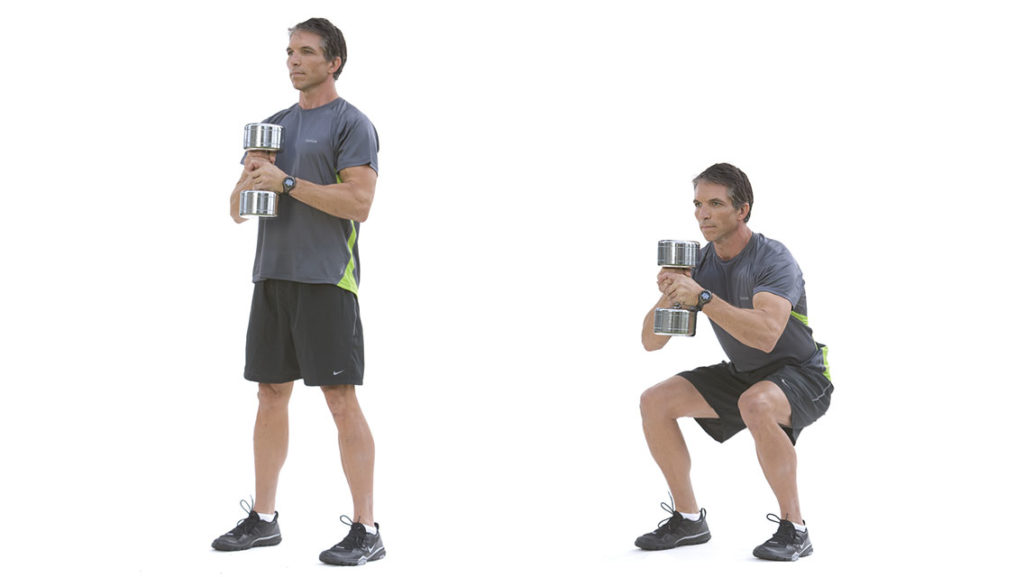
- Stand with your feet slightly wider than shoulder-width apart.
- Grasp a dumbbell vertically with both hands, the top close to your chest or even resting lightly against it.
- Push your hips backward, then bend your knees and lower your butt toward the floor. Squat as deeply as you can without rounding your back or straining your hamstrings. (The deeper you go, the stronger you’ll become throughout your full range of motion, but don’t sacrifice good form to gain more depth.)
- Generate force from your hips as you press powerfully upward to return to the starting position.
- Do eight to 10 repetitions using the heaviest weight you can lift with good form.
Concentrate on keeping your chest high, and keep the dumbbell close to you at chest level — don’t let your arms drop or your knees go beyond your toes. For a greater challenge, switch to another squat variation, such as the barbell back squat.
2. Pushup
Works the chest, back, upper arms, shoulders and abdominal muscles.
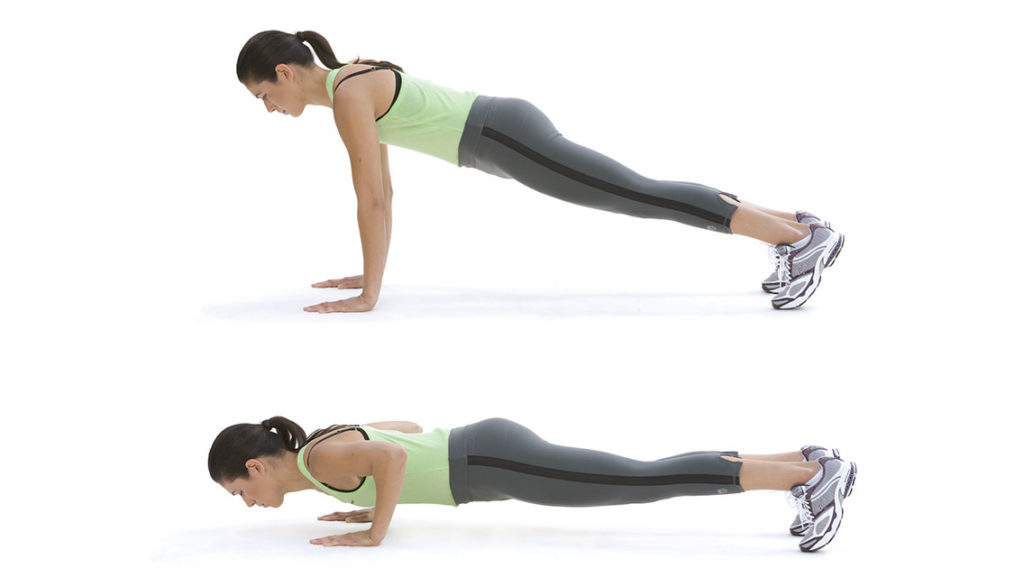
- Position your hands just outside shoulder-width apart. Imagine your body being a straight line from your ankles to the top of your head; don’t allow your hips to sag or your butt to stick up too high.
- Tuck your chin slightly so your neck is in line with your spine.
- Lower your chest to within an inch or two of the floor. Look at the floor the entire time, and keep your core braced tightly.
- Press back to the starting position.
- Do 10 to 20 repetitions.
If you can’t do at least 10 standard pushups, instead do elevated pushups with your hands positioned on an exercise bench. If you can do more than 20 pushups, do resisted pushups with a resistance band wrapped over your shoulder blades, the ends pressed to the floor under your hands.
Feeling the burn? It’s no wonder, notes Gentilcore: “It would take four or five different machine exercises to do all that the pushup does.”
3. Reverse Lunge
Strengthens the hips, glutes, hamstrings and quads, and also recruits the abdominal stabilizers for balance.
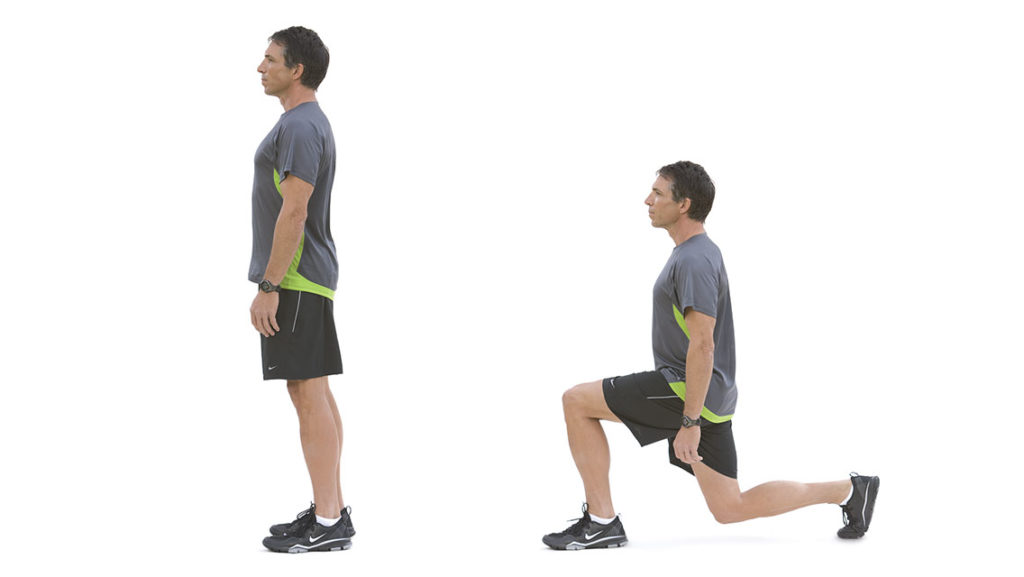
- Stand neutrally, your arms hanging at your sides. Take a long step backward with your right leg, keeping most of your weight on your left heel and maintaining an upright-torso posture.
- Use the left leg to decelerate your descent and propel your body back up to the starting position. That’s one rep.
- Complete eight to 10 repetitions with the right leg, and then work the left leg.
If you can complete more than 10 lunges, then do this exercise while holding a dumbbell in each hand. Use the heaviest dumbbells with which you can complete at least eight reps. For an even greater challenge, perform an elevated reverse lunge, stepping down from an exercise step.
4. Plank
Strengthens the abs, hips, lower back and glutes; increases endurance of spinal stabilizers.
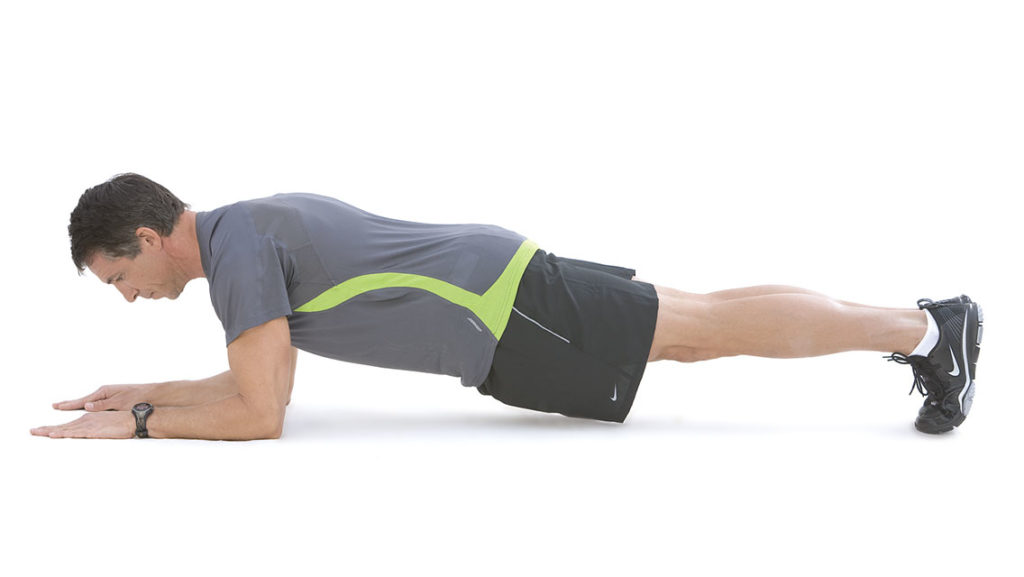
- Assume a standard pushup position with your upper-body weight supported on your forearms instead of your palms.
- Maintain a 90-degree bend in your elbows and make sure they are placed directly underneath the shoulders so you have a strong base of support.
- Brace your core and glutes, keeping your hips in line with your legs and torso. Hold the position — without sagging — for up to 30 seconds.
If you can hold the plank longer than 30 seconds, make it more challenging by doing it with one foot elevated a few inches above the floor.
If you do only one core exercise, choose the plank, says Gentilcore.
5. Three-Point Row
Strengthens back and shoulders; challenges the body to stay level and prevent rotation, thus emphasizing balance, as well as core strength and stability.
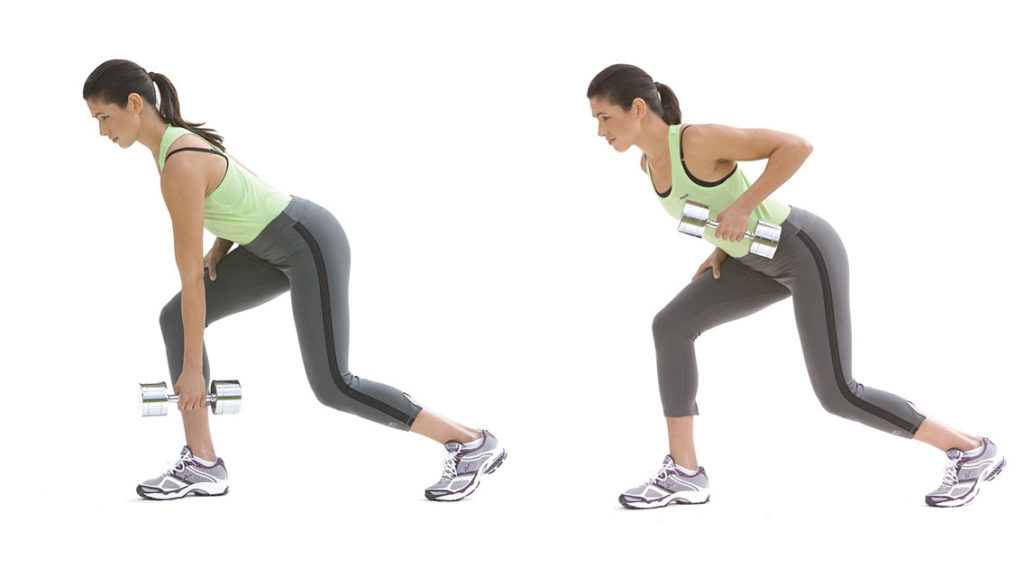
- Stand with your right foot one big step ahead of your left.
- Bend both knees moderately and lean forward about 45 degrees.
- Place your right hand on your lower right thigh, but keep your weight on your feet.
- Grasp a dumbbell in your left hand and begin with your left arm fully extended toward the floor.
- Pull the dumbbell toward a spot just outside your lower rib cage, keeping your elbow in. Now slowly lower the dumbbell.
- After completing eight to 10 repetitions, reverse your stance and switch arms.
That’s it. In a cool 20 minutes, you’ve breezed through a better workout than most people get in an entire day. If you have time, complete your squeeze-it-in strength workout with a cool-down consisting of a few dynamic stretches and mobility exercises like those you did in your warm-up and between sets. The next time you do the workout, swap out one or more of the exercises with other movements that challenge multiple muscle groups and keep you on your feet. Remember, variation is one of the keys to fitness progress.
Get-Fit-Quick Tips
Here are some tips from Tony Gentilcore, CSCS, co-owner of Cressey Performance Training Center in Hudson, Mass., on how to avoid frittering away precious workout time.
Arrive prepared. Have a plan mapped out ahead of time — even if it’s a list of five exercises — so you don’t waste time meandering between machines.
Keep your eyes on your work. It’s difficult to perform most strength exercises properly while watching the tube.
Plug your ears. Listening to music will help you “tune out” distractions and draw your focus inward. It will also discourage people from slowing you down for a chat.
Don’t waste time on cosmetic or ineffective lifts such as biceps curls and machine leg extensions. Instead, focus on whole-body exercises that provide more real-world benefits, such as lunges and pushups.
Set a time limit for your workout. You’ll accomplish more when you’re focused on completing a set task in a set amount of time.
Quick-Time Cardio
Strength workouts aren’t the only routines that can be completed quickly. For a super-fast cardio workout, check out “The Tabata Tune-Up” and “HIIT It!” respectively.
Eating on the Go
Being busy doesn’t just affect your workouts; it also affects your diet. To get the most out of your quick strength workouts, you need to fuel your body appropriately before and after.
It’s important to have a light snack that provides the energy you need without risking an upset stomach before heading to the gym, says John Berardi, PhD, president of Toronto-based Precision Nutrition. “I recommend homemade energy bars, super-shakes (i.e., smoothies), or even just an apple, some mixed nuts and some cheese,” says Berardi.
During the workout, Berardi recommends sipping on a protein-carbohydrate drink to stay hydrated and help with muscle building and recovery. And after your quick strength workouts, he says, be sure to make time for a complete meal consisting of a balance of lean protein, healthy carbs and a little healthy fat.
This article originally appeared as “The Squeeze-It-In Strength Workout.”
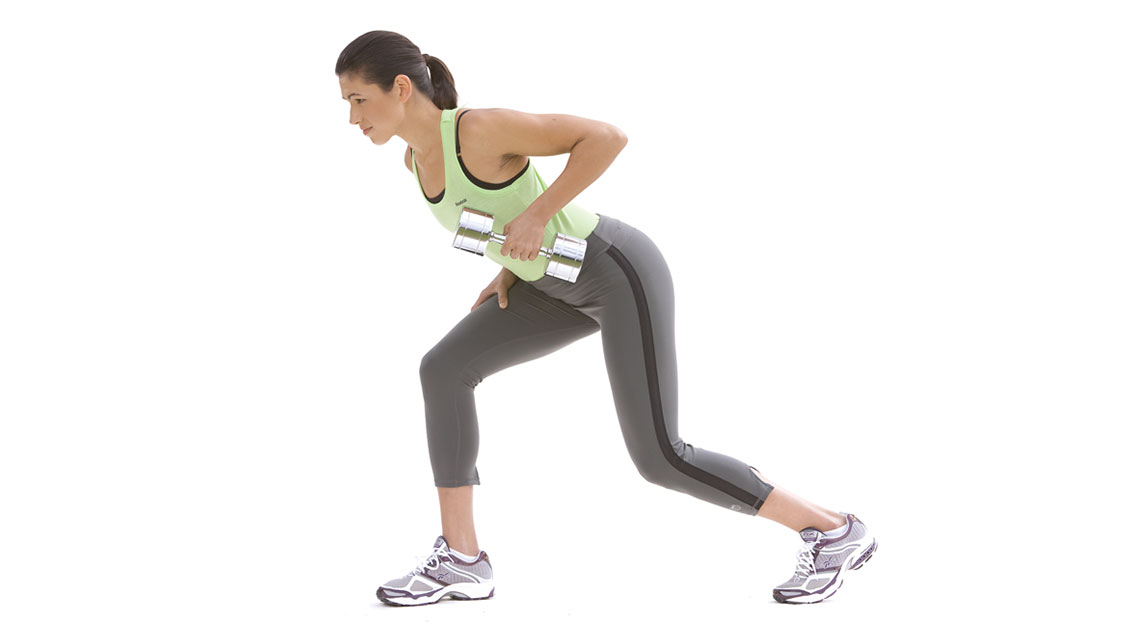
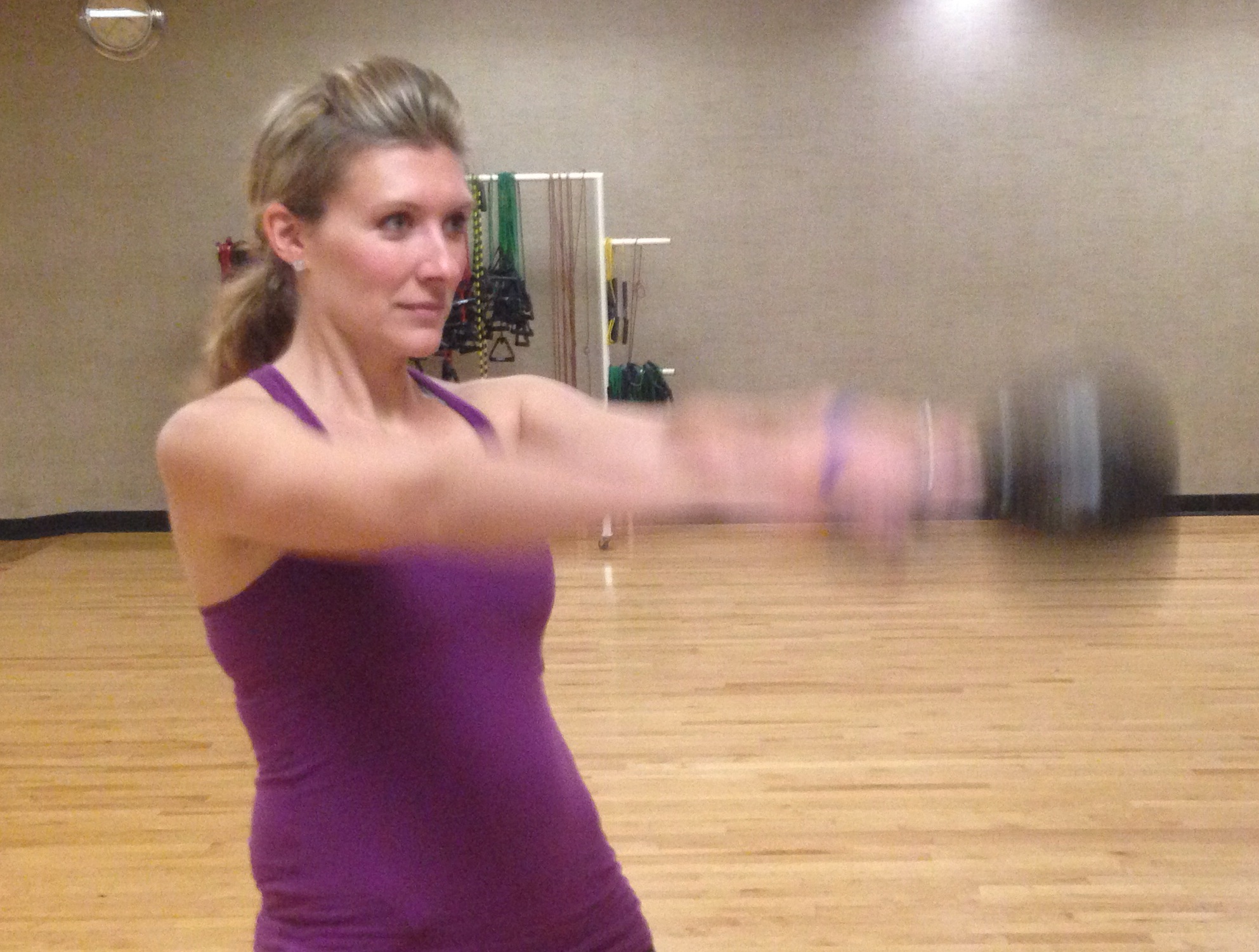

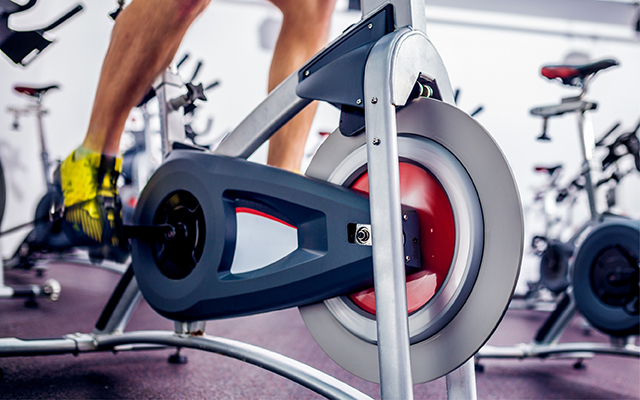
This Post Has 0 Comments